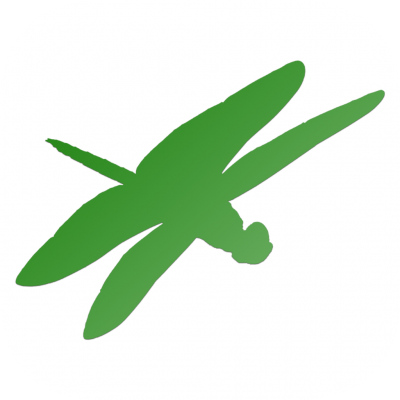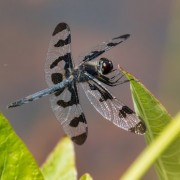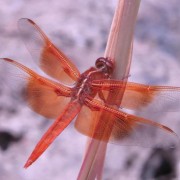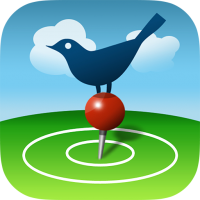Product Description
Mobile logging of your dragonfly and damselfly sightings!
We’re excited to announce that our partnership with OdonataCentral continues with OdeLog – the OdonataCentral Mobile App. OdeLog will allow you to record checklists of odes you observe in the field from your smartphone.
Many people keep records of the odes they observe but only a tiny fraction of these potentially important observations make their way into public databases. The goal of OdonataCentral is to capture this valuable information and make it available to the public forever and for free. OdeLog is designed to make collecting and managing ode sightings easier and more fun.
Currently our plan is to make OdeLog a free app if we can raise enough donations to make this goal feasible. Our goal is to release it before the peak of the summer ode season.
As early supporters of eBird, we believe that it is an excellent model of how to set up a citizen science project. Not only is eBird fun and easy to use, perhaps most importantly, the data are useful to scientists for large-scale population monitoring of population, seasonality and distribution.
To accomplish our goal of building the “eBird for Odes”, we will follow these guiding principles:
- All the observations will go into OdonataCentral/MDP.We don’t believe it makes sense to create another separate citizen science database. Instead we would prefer to see our efforts go towards improving an already excellent database. Note that OdonataCentral and the Migratory Dragonfly Partnership share an underlying database.
- Our goal is to maintain three types of data: A) the Odonata Central records that have passed their careful vetting process. These will mostly consist of rare sightings or difficult to identify species; B) publicly shared data that can be accessed by all users that go through a less rigorous automatic vetting process (under development) and consists of more common species; C) your personal records will be maintained in the database regardless of their vetting status so you can access your own data and maintain your own lists. You will be able to filter the data to only see the data type you want.
- Users will be encouraged to enter complete checklists of the odes observed in a specified time and location, including counts. Our goal is to not only capture sightings of rare species but to also encourage sightings of common species. This information is the most valuable in understanding the long term trends for the health of ode populations and their habitats.
- Checklists should be associated with an observation protocol. The observation protocol indicates the type and level of effort that went into recording the sightings. Protocol encompasses things like distance traveled, time spent, area surveyed, etc.
- Users should be encouraged and enabled to identify dragonflies to the best of their ability, but not beyond. We will provide the option to report things like: “Northern/Boreal Bluet”, “Bluet sp.”, Libellula sp. or even just “Dragonfly sp.” If users aren’t sure, we don’t’ want to force them to guess. Users should be encouraged and able to report odes in all of their life stages.
You can help make this happen! This project is not expected to earn money. Everyone involved in this project is doing it out of a sense of just how valuable (and awesomely fun!) it would be to have this tool available for ourselves and other nature lovers. If you are interested in helping as a tester, as a user, as a contributor of text or photos, or financially please make your contribution online through the options at the top this page, or email us at support@getbirdseye.com.
More details: Our goal is to make this simple first step available this summer, and we hope it will be before the peak of the dragonfly & damselfly season in most of the US and Canada. Here is a very rough outline:
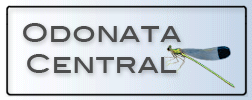 It will connect with the OdonataCentral / Migratory Dragonfly Partnership database. Submissions will be tied to OdonataCentral user accounts. New users will need to set up OC accounts to submit sightings.
It will connect with the OdonataCentral / Migratory Dragonfly Partnership database. Submissions will be tied to OdonataCentral user accounts. New users will need to set up OC accounts to submit sightings.- Currently we don’t have funding for several critical features including the interface to submit of photos from the app
- We plan to roll out iOS first and then Android.
- Clearly the data will be of a different type than the 100% vouchered data currently in OdonataCentral and in that sense will be more like Migratory Dragonfly Partnership data. We do not want to (pick your favorite pejorative) “dilute” that data with unvetted submissions . On the other hand, we do believe that this new data will be valuable and should be available through the OC website. So we will find ways to allow users to view just traditional OC data, this new OC data or both together.
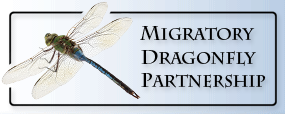 Initially it will only be possible to submit data through the OdeLog app, but we plan to build out the portions of the OC website that will allow OC users to submit observations online as well.
Initially it will only be possible to submit data through the OdeLog app, but we plan to build out the portions of the OC website that will allow OC users to submit observations online as well.

